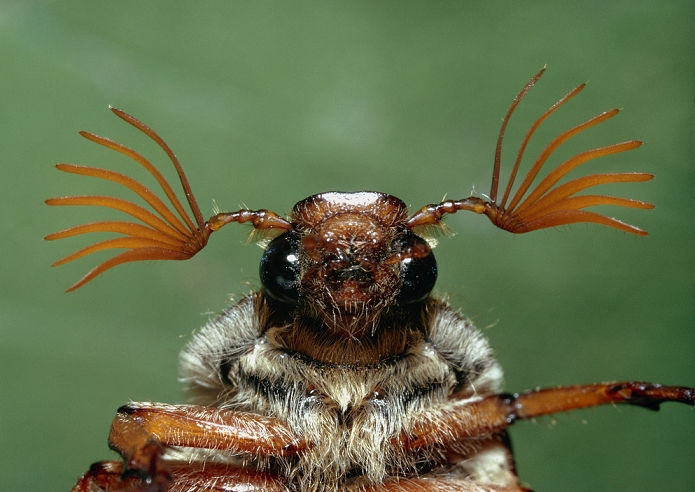
ED
June beetle. Macrophotograph of the head of a male June beetle or cockchafer Melolontha melolontha, showing its lamellate (fan-leaved) antennae. The pair of jointed antennae, enlarged in the male beetle, are a mobile sensory appendage of the head. They are used by male June beetles to detect chemical attractants given off by the female. Melolontha beetles are large, brown insects noted for having a noisy and clumsy buzzing flight on early summer evenings. They damage trees by feeding on leaves and flowers, and live just a few months.
Details
ID
10776399
Collection
License type
Editorial
Photographer
Creation date
14-12-2010
Contact Aflo for all commercial uses.

More
Top Categories
